Campion Student Center, Sourin Hall, LaFarge
Introduction
Text-to-speech Audio
Campion, LaFarge, and Sourin were built to promote student life, at a time when the number of residential undergraduates were growing and spending time on campus started to become more and more popular. During the mid-20th century Saint Joseph’s University experienced a shift from commuter students to residential students and buildings like Campion, Sourin, and LaFarge were essential for housing students and making living on campus more popular.
Images
Suorin
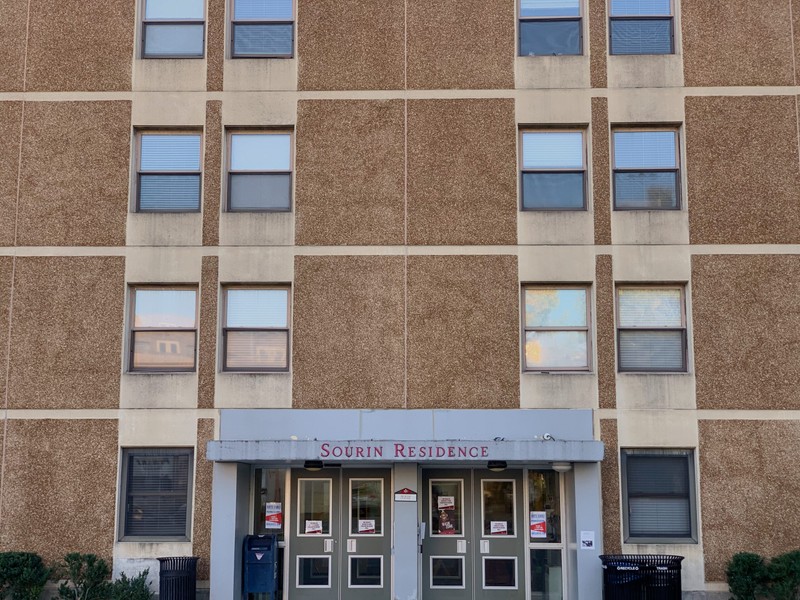
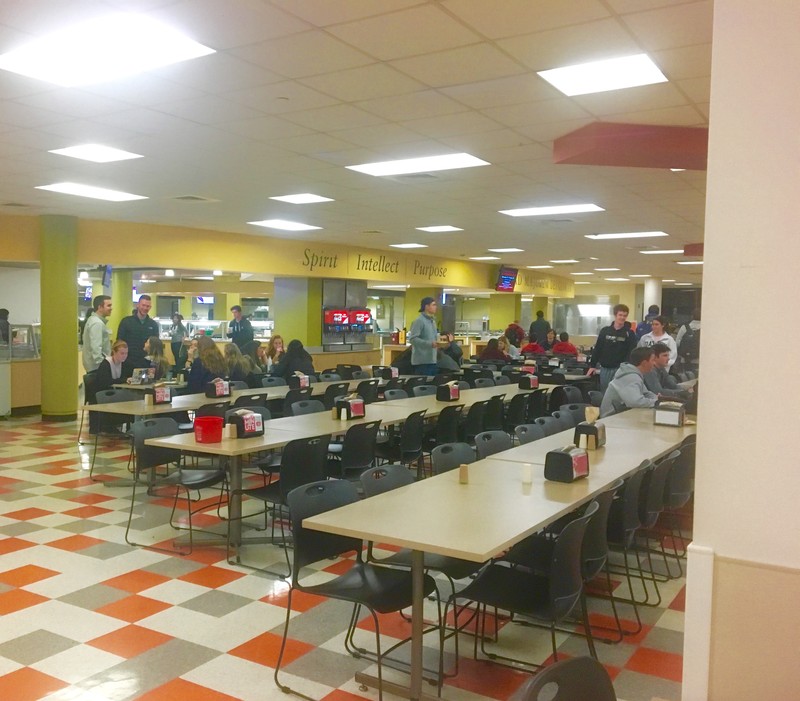
Lafarge Common Area
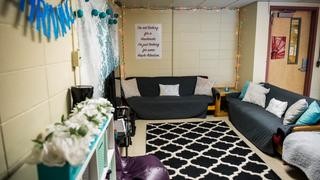
Lafarge Overview

Suorin Dorm Room

Sourin Hall, which opened in 1981, sits on Cardinal Avenue and is home to 248 student residents. This “highrise” 10 floor dormitory was built for the high demand for incoming and present residential students who wish to live on campus.
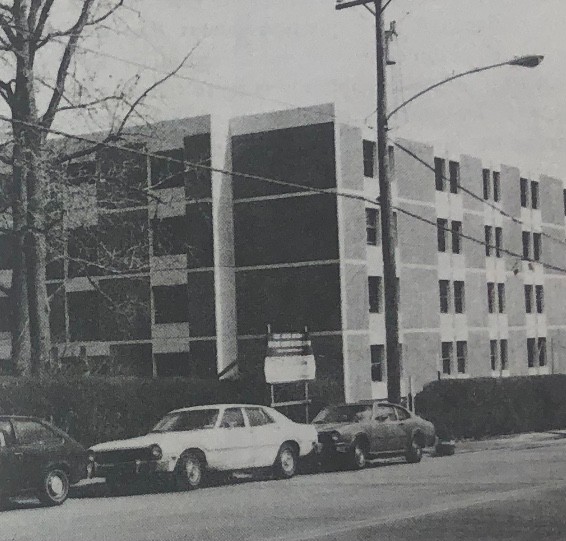
This is the view of the approach to Campion in 1966. Seen on the right side of this picture is a stone wall that at the time separated the college from Margeret Gest’s estate. Finished in 1970, this picture does not display the ground floor cafeteria, and the second floor conference rooms.
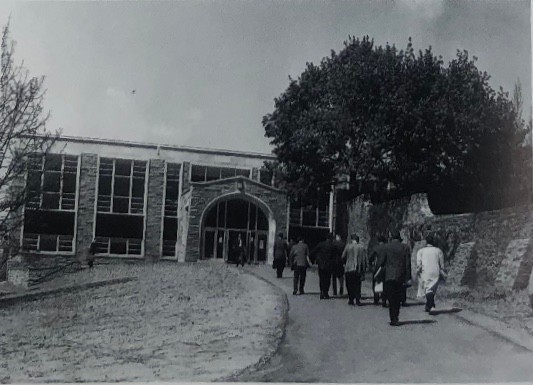
Backstory and Context
Text-to-speech Audio
Saint Joseph’s College had several location changes and showed a glimpse of their growth at their Girard Avenue location after a generous donation from Francis Anthony Drexel. This estate was very helpful for expanding SJU and continuing its expansion. Key factors like donations and funds also contributed towards SJU’s growth. Reverend Matthew Fortier organized a building fund that raised $1,000,000 and was put towards twenty-three acres of land where they would start to build on residential life (History of the University). Yet all of this progress came to a sudden halt due to World War II which caused an unfortunate reduction in enrollment that put all of SJU’s progress to a halt, but ended up causing a postwar boom in college enrollment with the help of the G.I. Bill of Rights, which provided services, programs, and benefits to the veterans of World war II. This led SJU to open their Evening College, acquire a spacious home around campus, a nine acre estate from Margaret Gest, a sixty-story student dormitory, expansion of the Student Center, and a welcoming for women in undergraduate day college. (History of the University). The vast growth and expansion of buildings is what caused SJU to draw its students towards the opportunity of having improved residential life while living on campus.
The Campion Student Center, named after the Jesuit saint and martyr Edmund Campion, was one of the first buildings that expanded residential life as well as a symbolic landmark in times of cultural change. Campion Student Center was built at a cost of $650,000 and opened in January 1961. The building and expansion of Campion Student Center offered a lot of luxuries and resources for students on campus. It was one building that displayed the focus of keeping students on campus and improving residential life. Campion Student Center contributed a lot towards a student's experience of living on campus because inside the student center were several lounges, a student cafeteria with seating for 500 students, a campus bookstore, offices for student organizations, and the wood paneled Presidential Lounge with a fireplace (Contosta). With the help of Campion Student Center and other buildings, SJU expanded its campus. These were the first steps towards the growth of residential life. After the death of Margaret Gest in 1965, SJU moved to full throttle in plans for expanding. With the death of Gest came an additional ten acres of land for Saint Joseph's. This allowed for an expansion of Campion Student Center which was completed in 1970 and construction was now underway for new buildings like the Science Center. During this time, Saint Joes underwent a cultural change that the student newspaper was very critical of. Student social life abandoned the dress code, a decline in formal balls and dances, and having women in the day program. Campion also played a role in connecting with wider events on campus proceeding after the Vietnam War. In November of 1967 two to three dozen students gathered outside of Campion to spread support for the war combined with hostility toward war protesters (Contosta). A vigil was organized and held to mourn the dead in Vietnam, but was soon sabotaged by pro-war students who mocked and made comments to their fellow classmates and others. Campion was the site for many vigils and protests marked in history.
LaFarge would allow the 350 freshmen it fit to pick their own roommate, have furniture, etc, live with around 8-12 kids, and also include maid services to help the freshmen keep their dorm clean. Saint Joe’s also didn’t want to include the word “hall” in the name of the building for the simple fact that they wanted to make the freshmen feel like it is a living space, not a class building. What makes this building also so special in my opinion is who the building was named after and why. Built in 1970, LaFarge was named after Rev. John LaFarge. John LaFarge was known for being an advocate for racial equality. This is a great fit for the particular building because LaFarge is a space built for new people to come feel welcomed and gain comfortability in a new environment. It just helps send the message to freshmen that it is not just a living space, it is a dorm where they can meet new people and gain new friends from different areas no matter who they are or what they look like. From my own experience, LaFarge was a great living space and I grew comfortable living in a place that wasn’t close to my family; but it soon became my second home.
The Sourin Student Residence Center, which opened in 1981, was a key addition to Saint Joseph’s University at a time when there was a high demand for the expansion of on-campus housing. The Sourin Student Residence Center, eventually named Sourin Hall, would be home to 248 resident students and hold many events for student life. Reverend Edward J. Sourin, S.J. (1808-1888), was a key contributor in Philadelphia Catholic Education as well as the Church of Saint John. At a time when the Jesuit priests were looking to move and find more modern churches and living, Father Sourin and the first president of Saint Joseph’s College, Father Felix Barbelin, S.J., arranged for a sale of the Church of Saint John and its property. According to Reverend Edward J. Sourin, S.J. 's obituary, “Saint Joseph’s acquired facilities suitable for a college.”A program called Elderhostel, college experience for seniors with active minds, was introduced to Sourin Hall along with most of Saint Joe's campus. This was a program held for grandmothers, retired educators, and senior citizens who were eager to learn and fill their brains. This was a summer program that was held at 300 colleges for ages 60 to 78. These people would attend three one-week Elderhostles at SJU, “where they listened to three college level lectures a day, lived in campus dormitories, and enjoyed activities like plays and concerts” (The Hawk 1980 Addition). This program was arranged to prove to people that the elderly are far from inactive and are actually very lively and quite engaging with their professors. So much, that the professors gave them praise and recognition.
Unlike Campion…Sourin and LaFarge are residential areas where some freshmen lay their heads down at night. However, all three buildings give off the same type of message for the young undergrads that are currently attending and want to attend Saint Joes. The general theme is to give the younger students places they can go to meet new people and gain comfortability in a new environment. Sitting down and grabbing a bite to eat while trying to meet new people is an easy way for one student to gain new and more friends. Not only that, maybe seeing people in Campion or around campus in general, then seeing them walk by in the same dorm usually gives students more confidence to grow up to another and introduce themselves and become friends. The meanings of the buildings were thought out very well and I think all three buildings live up to the expectations for the new students.
Sources
Campion, FBLD.0026, 5L, Saint Joseph’s University Records, Saint Joseph’s University
Archives and Special Collections.
Contosta, David R. Saint Josephs: Philadelphia's Jesuit University: 150 Years. Saint Joseph's
University Press, 2000.
History of the University July 2013 - Home - SJU Wordpress Sites - Saint ...
https://sites.sju.edu/academicadmin/files/2017/01/History-of-the-University-July-2013_fi
nal.pdf.
Sourin, FBLD.0022, 5L, Saint Joseph’s University Records, Saint Joseph’s University Archives
and Special Collections.
https://www.google.com/url?sa=i&url=https%3A%2F%2Fhawkchill.com%2Fpeople%2Fa-caged-hawk-students-perspective-in-quarantine-on-campus%2F&psig=AOvVaw1kUEezH2vBHngZYRduzJ29&ust=1650658000489000&source=images&cd=vfe&ved=0CAwQjRxqFwoTCKCBh7T6pfcCFQAAAAAdAAAAABAQ
https://www.google.com/url?sa=i&url=https%3A%2F%2Fhawkchill.com%2Ftastes%2F5-thoughts-you-had-in-campion-on-admitted-students-day%2F&psig=AOvVaw3-ZSJHkwsYsztxDyWPjrWP&ust=1650658558071000&source=images&cd=vfe&ved=0CAwQjRxqFwoTCKiGlbv8pfcCFQAAAAAdAAAAABAZ
https://www.google.com/url?sa=i&url=https%3A%2F%2Fwww.sju.edu%2Foffices%2Fstudent-life%2Fresidence-life%2Fhousing-information%2Fhousing-options%2Flafarge&psig=AOvVaw0XmeymK0jVppO_YAvdUdDq&ust=1650658766386000&source=images&cd=vfe&ved=0CAwQjRxqFwoTCJDw5qD9pfcCFQAAAAAdAAAAABAD
https://www.google.com/url?sa=i&url=https%3A%2F%2Fwww.sju.edu%2Foffices%2Fstudent-life%2Fresidence-life%2Fhousing-information%2Fhousing-options%2Flafarge&psig=AOvVaw0XmeymK0jVppO_YAvdUdDq&ust=1650658766386000&source=images&cd=vfe&ved=0CAwQjRxqFwoTCJDw5qD9pfcCFQAAAAAdAAAAABAL
https://www.google.com/url?sa=i&url=https%3A%2F%2Fsites.sju.edu%2Fhousing%2Fhousing-information%2Fhousing-options%2Fvilliger-hall%2Fimg_4853%2F&psig=AOvVaw06nU7QOcLEBDlB0eZrosu4&ust=1650659145511000&source=images&cd=vfe&ved=0CAwQjRxqFwoTCNilq-D-pfcCFQAAAAAdAAAAABAJ
Sourin, FBLD.0022, 5L, Saint Joseph’s University Records, Saint Joseph’s University Archives and Special Collections.
Campion, FBLD.0026, 5L, Saint Joseph’s University Records, Saint Joseph’s University Archives and Special Collections.
